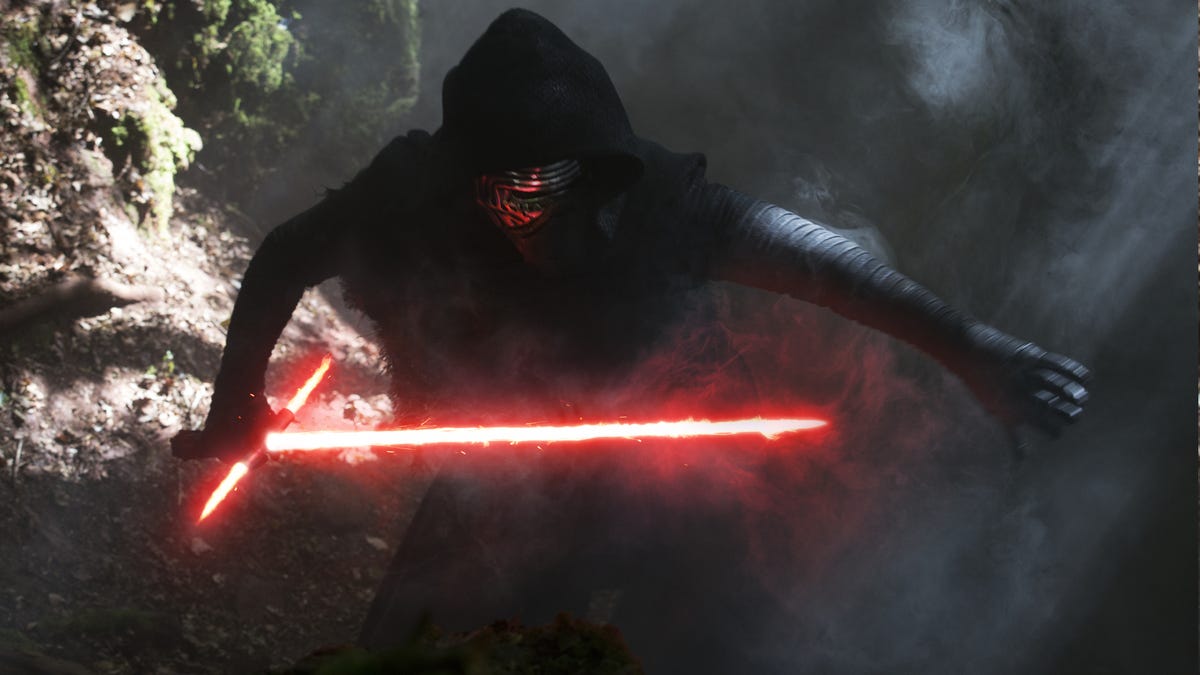R2-D2 is PG-13: 'Star Wars: The Force Awakens' rated in the US
The MPAA has a bad feeling about the "sci-fi violence" of the new Star Wars film, not that it'll make any difference.
In what is probably the least relevant movie rating since long ago, in a galaxy far, far away, "Star Wars: The Force Awakens" has received a PG-13 rating.
The hugely anticipated new Star Wars film, the first for 10 years and the first in a new trilogy masterminded by director J.J. Abrams, is in theatres in December. Kids are going to go see it anyway, but for what it's worth the Motion Picture Association of America (MPAA) has urged parental guidance for US kids anxious to see the forthcoming Disney film in light of its "sci-fi action violence".
The MPAA's PG-13 rating suggests that some material may be inappropriate for pre-teenagers and parents are urged to think hard before taking under-13s to see the film. There is no actual restriction, however, on the age of potential moviegoers in the US.
The only previous Star Wars film to receive the PG-13 rating was "Revenge of The Sith", which saw its main character have his legs lopped off and his body melted by lava. Characters losing arms is a motif of the Star Wars series, but cauterising lightsabers and laser blasters make most wounds bloodless, so the action is rarely gory.
Concerned parents can find US ratings on filmratings.com. The MPAA has yet to respond for a request for comment on the specifics of the film that necessitate a PG-13 rating, but the board generally doesn't go into specifics anyway. Unlike, for example, the British Board of Film Classification (BBFC), which provides for each film a report of specific themes, incidents or lines of dialogue that prompt the given classification. Handy for concerned UK parents, although spoilers will abound.
The British rating system is more granular than the US system, so it might give parents a clearer idea of the tone of the film if it's certified U (universal), PG (parental guidance with no age restriction), 12A (under-12s must be accompanied by an adult) or even 15 (over-15s only). The BBFC has yet to certify "The Force Awakens" but pointed out to CNET that the US and UK ratings systems do not directly correspond: in 2014, 19 PG-13 films were rated 15 in the UK rather than 12A.
It's highly unlikely that such an eagerly anticipated movie would be rated 15, however, with blockbuster filmmakers often anxious to make cuts to receive a lower rating rather than restrict their possible audiences. Even "Spectre", which has some pretty mature content, is a 12A in the UK.
Movie ratings are often controversial. In the US, the practices of the MPAA were strongly criticised in the 2006 documentary "This Film Is Not Yet Rated". More recent ratings brouhahas include the BBFC's 18 rating for "The Diary of a Teenage Girl", which the filmmakers criticised for cutting off the teen audience affected by the film's themes. And a British filmmaker is currently crowdfunding a film of paint drying that he will submit to the BBFC to force the board to sit through the full 11-hour length of the film in protest against the cost of submitting a film for certification.
"Star Wars Episode VII: The Force Awakens" will be scaring small children in the UK and Australia on 17 December and in the US on 18 December. Australian Classification has yet to issue a certificate for the new movie, but it gave "Revenge of the Sith" an unrestricted M rating, meaning any child can see it unaccompanied.


